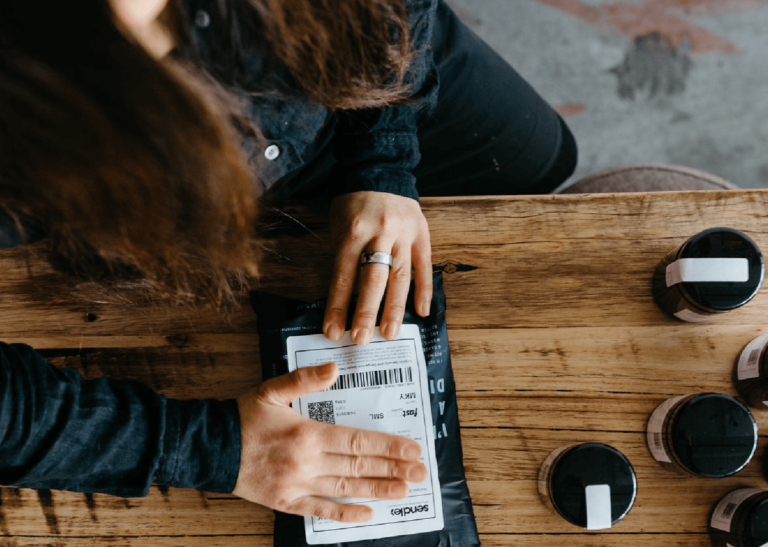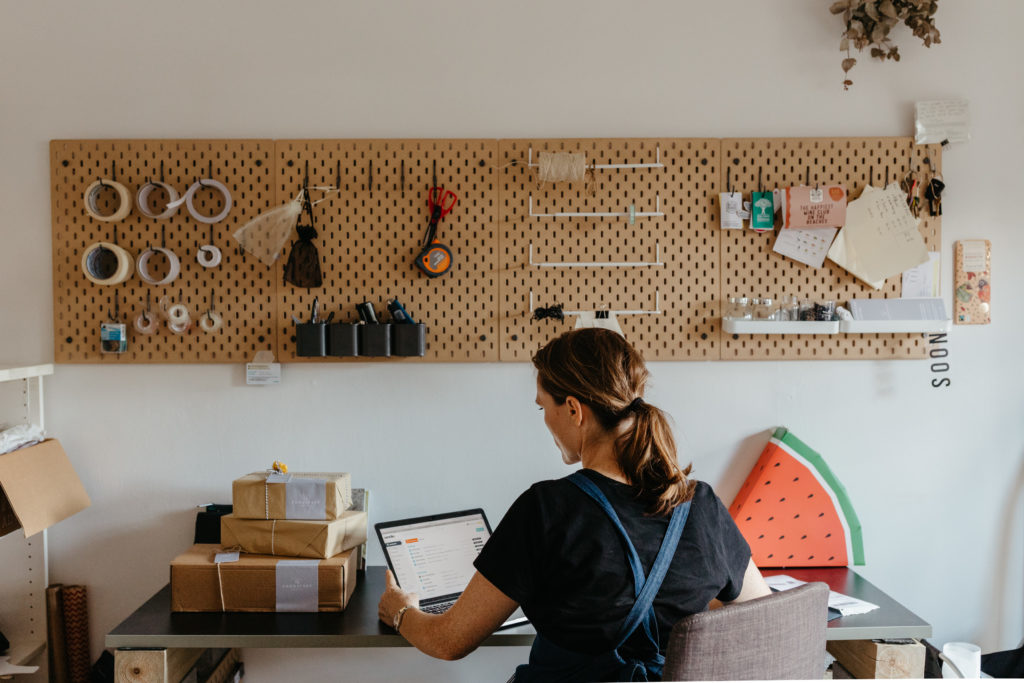Sustainable Packaging Options for Small Businesses

This post was contributed by Sean Flannigan, Content Manager at Sendle, a 100% carbon neutral shipping company built for small businesses in the US and Australia. Sean develops small business resources over at Sendle’s blog.
Becoming a more sustainable business can take many forms, from green procurement and renewable energy to recycling programs and carbon footprint offsets.
For ecommerce businesses that ship regularly, another way to move toward sustainability is by choosing eco-friendly packaging materials that have a smaller impact on the environment.
Sustainable packaging falls into one of three categories: recyclable, reusable, and compostable. These are also great packaging for small business options.
Here is a quick description of each:
Recyclable packaging
The most commonly used packaging—this encompasses cardboard boxes, molded pulp forms, and paper void fill. Often sourced from sustainably managed forests and sometimes compostable, paper recyclable packaging is a hardy and low impact option for shipping.
Reusable packaging
Used for limited applications in businesses that can rely on the return of packaging—kegs, pallets, shipping containers, plastic totes, etc.—this packaging is extremely eco-friendly but may not be as effective for small B2C businesses.
Compostable packaging
This type of packaging is becoming more and more available as technology improves. With the end result being no waste and rich soil, the only impact compostable packaging incurs is in its manufacture. This makes it a great choice for both sellers and their customers.


Types of sustainable packaging
Corrugated cardboard
Cardboard is a sustainable packaging material used to ship over 90% of all products in the US, so it certainly belongs at the top of this list. There are a lot of reasons to use cardboard boxes for shipping, from their singular utility and multitude of options to their affordability and exceptional reusability.
While much of it is produced from recycled paper, it is also produced from trees (sustainably forested) that require massive amounts of energy and water to process. Luckily, boxes can be made from up to 100% recycled material, making it an extremely environmentally friendly packaging option.
Cardboard boxes are very reusable so long as they retain their form, extending their life cycle. They can be recycled up to 25 times before they have to be composted or thrown out. If it can be composted instead of thrown into the landfill, the overall methane emissions will be reduced.
Packing paper
So, you have your recycled box all ready for packing. You need to cushion your product to prevent rattling and breakage. To fill that void between product and box, you use one of a variety of options in the world of void fill (aptly named). Paper is a popular packing material choice for this.
You can get fat rolls of kraft paper which you can manually bunch up into cushiony balls to stuff strategically around your merchandise. You can buy shredded paper to treat your product to a cozy nest of protection. For your more delicate items, there’s tissue paper to wrap gingerly about those ceramic and glass whatnots.
Finally, you have the machine managed paper packaging, whereby a noisy robot crunches kraft paper or puffs up paper bubble wrap in order to make your packing quick and efficient.
Paper packaging is recyclable and can also be composted (an especially good option if your city has a composting program). Further, packaging is often reusable.
Reusable plastic totes
While impractical for most ecommerce businesses, plastic totes are a super sustainable packaging option for businesses that can implement the complex distribution and return system required for consumer adoption. It may not be the best small business packaging option for this reason.
Community Supported Agriculture programs (CSAs) are one type of business that can and does successfully use plastic totes. Since they are regionally based and have their own distribution system in place, returns are made easy for their customers.
Plastic totes are also great for internal use to and from distribution centers and retail locations of larger businesses.
While plastic totes are initially more expensive, their cost becomes minimal over the lifetime of their use. Same for their sustainability—assuming they live a long life, plastic totes replace a great deal of cardboard boxes that may only be used once before returning to the energy-intensive machinery of recycling.


Mushroom packaging
Mushroom packaging is still in its early days. By growing the mushroom’s root system—called mycelium—into a mold and baking it to become inert, a type of protective cushioning can be created which is entirely compostable at the end of its cycle.
One of its more obvious and exciting applications is for the replacement of polystyrene packaging, which fills up our garbage bins and sticks around for much too long. Other great applications are grow-it-yourself lampshades, thermal insulation, and building materials.
Ikea is a major company pioneering its use for packaging their products.
Compostable mailers
Compostable is a loaded word. Some items are only commercially compostable, while others can merely be tossed with the rest of your scraps by the garden. The good news is that the packaging will make clear whether it is commercially compostable or home compostable.
Compostable mailers vary in material. Some are made with renewable plant material (i.e., corn husks and straw) that can be both commercially and home compostable (these are bioplastics, covered below). Others are made of recycled paper products that are best composted commercially.
Sendle now sells home compostable pouches made from corn starch, polylactide (made from corn and other plant waste, and PBAT). After you ship, it becomes delicious food for worms!
Compostable packing peanuts
Traditionally, packing peanuts have been made out of polystyrene—a non-biodegradable, non-recyclable plastic pollutant. With these adverse environmental implications, starch-based packing peanuts came on the scene in the 1990s.
These eco-friendly substitutes are made from non-toxic plant sources, such as grain sorghum and corn starch. Completely biodegradable and dissolvable with water, the waste footprint of this newer style of packing peanut is vanishingly small.
Bioplastics
Bio-based plastic material, or bioplastics, were created to displace traditional plastics made from non-biodegradable fossil-fuel plastics. While not all bioplastics are biodegradable, there are no petroleum-based plastics that are biodegradable.
Bioplastics are largely used in food packaging, as well as bags, utensils, and straws—but its applications are vast, replacing regular plastics wherever they are used. PLA (polylactic acid) is the most common bioplastic used to replace polystyrene, polyethylene, and polypropylene. It is usually made from the sugars found in sugarcane, corn starch, and cassava.
Where bioplastics are made from edible parts of plants, they compete with human consumption and require a greater share of land to be used. So, while they reduce emissions of greenhouse gases and use of nonrenewable resources, bioplastics also negatively impact the environment through water use, land use, deforestation, and the use of pesticides and fertilizers.
As with many things, there is a balance to strike to determine the ecological benefit of a product. Bioplastics come in many forms and their impact will vary from type to type. Making the switch to sustainable packaging will help improve your business’ sustainability practices.



